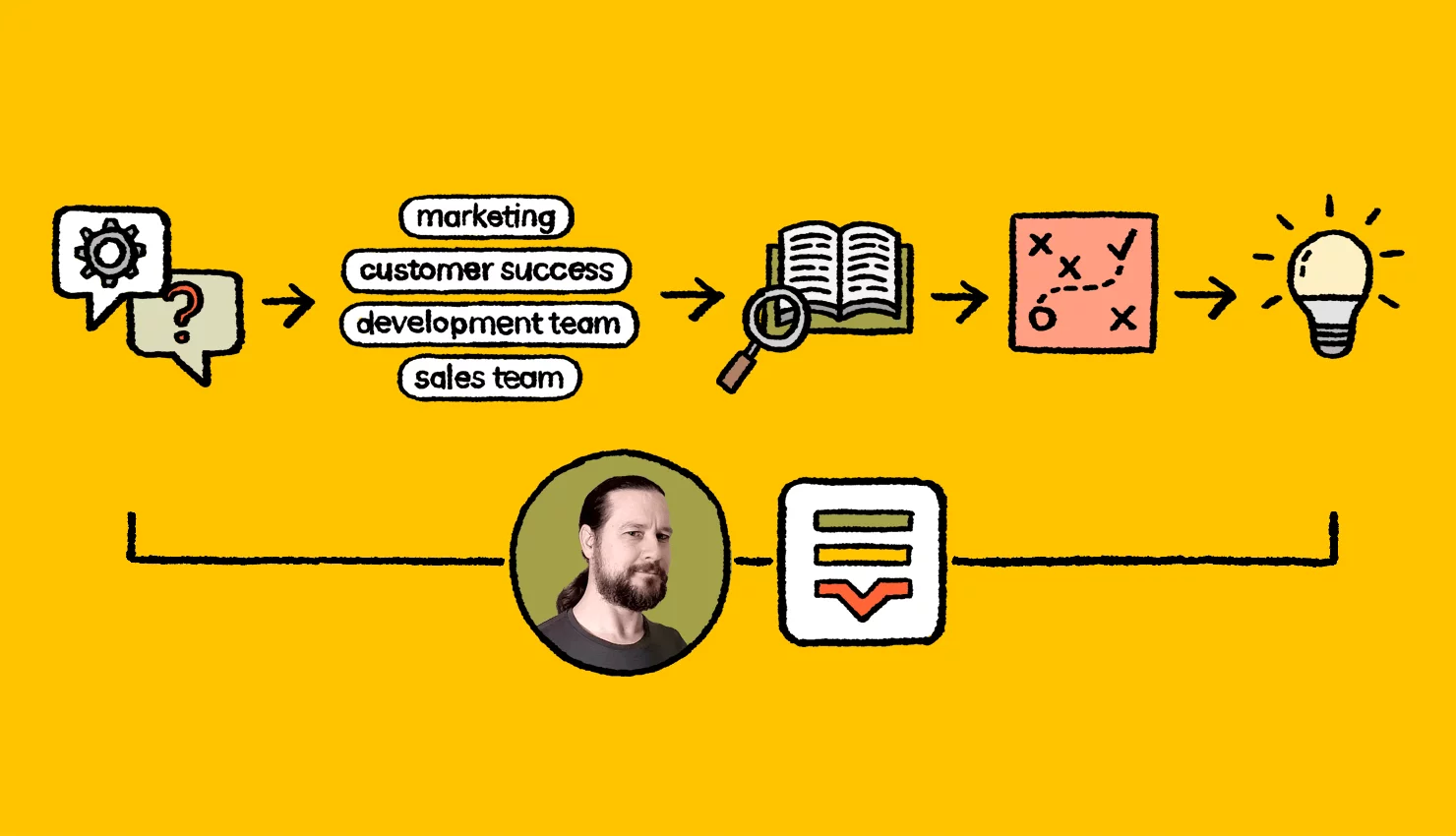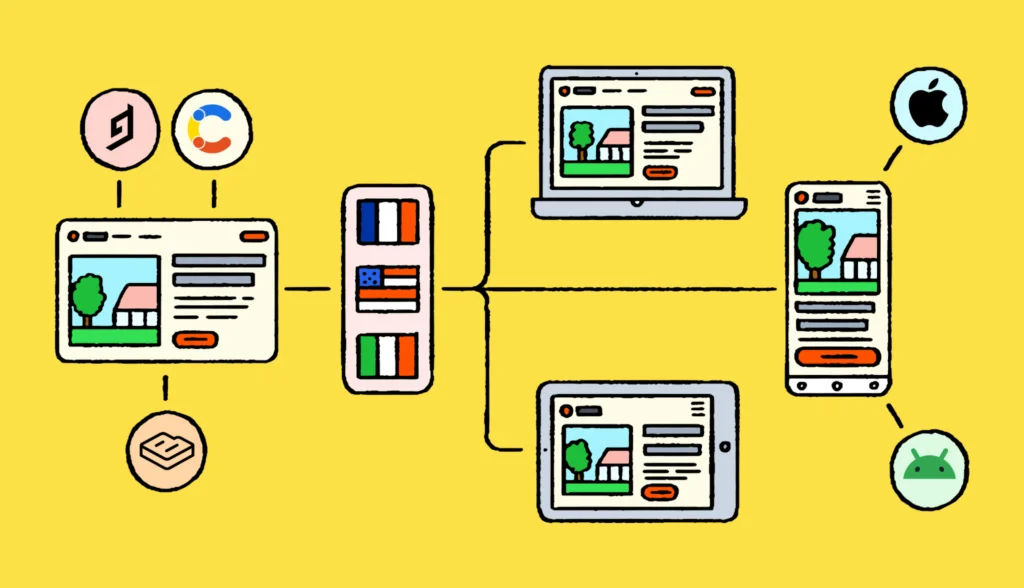It’s interesting to explore how we understand and interpret the roles of our colleagues. If you ask people in different companies what their colleagues in other departments do, you get different answers. Plus, people can have the same job title, work in the same industry, have roughly the same level of experience, and still work in incredibly different ways.
On the surface, it seems pretty simple. Developers develop. Marketers market. Salespeople sell. However, as a SaaS business grows, it requires specialized people who own specific parts of the product development cycle, sales cycle, and buyer lifecycle.
If you have ever wondered where a Solutions Architect (SA) fits into the sales process and what exactly they do in a SaaS company, we have a treat in store for you.
We sat down with Tomas Franc, who joined Lokalise in December 2020 as a Solutions Architect; this post is the resulting shot into which we distilled his experience.
With over 20 years in the localization industry and an award for the 2nd Process Innovation Challenge from LocWorld, Tom sheds light on his career journey, daily work, and why he loves working at Lokalise.
An evolving career in localization
Like many professionals, Tom didn’t choose his career path – it chose him.
With a professional background in mechanical engineering, automation, and robotics, Tom seems like an unusual candidate for a localization solutions architect. But if you think about it, there is plenty of overlap: engineering is about building systems to solve problems, and solutions selling is about understanding unique customer challenges to help them define the best way to overcome them.
Fresh out of university, Tom’s first job in the world of localization was as a test engineer, someone who checks for inconsistencies between an original source and the localized version. In his two-decade career, Tom has taken baby steps, iterating his knowledge and experience to grow into his current role. Here’s how his progression looks:
Test Engineer → Localization Engineer Lead → Software Localization Engineer Lead → Software Localization Engineering Group manager → Testing Group Manager → Knowledge Lead → Solutions Architect
Tom shared how his previous role as a knowledge lead was “halfway to solution architecture.” Digging a little deeper, he explains how it gave him a chance to meet people, learn about their projects and challenges, and perform research and document knowledge. From there, the evolution into a solutions architect was the natural progression.
What exactly does a solutions architect do?
Broadly speaking, solutions architects are the bridge between the business and technical sides of an operation. They translate customer needs and business goals into actionable technical solutions. To do that effectively, they need to collaborate with various teams, including customer success, marketing, sales, and development.
“Solutions architects help you to realize that what you need is something completely different from what you want.” says Tom.
Let’s unpack that.
When working on big projects with enterprise customers who rely on legacy tools, Tom discovered that they frequently ask for: “small technical fixes that don’t actually solve underlying problems and help them achieve their overarching goals.”
The starting point is always the customer’s goals. Nonetheless, there is often an obstacle in between where the customer is and where they want to go. As an expert who perfectly understands localization workflows, engineering, and TMS technology, Tom’s role is to listen to customers and ask the right questions until he narrows down to a precise problem and digs to unearth a solution.
So, what does a localization SA need to succeed?
- Empathy and an inclination to help others
- Curiosity and commitment to continuous learning
- Creativity that leads to innovative solutions
- Leadership and people management skills
- Technical knowledge of localization software engineering
- Knowledge of the entire localization process from the bottom up
- Experience working with enterprise companies
A typical workday
The beauty of being a solutions architect is that it’s a forcing function for infinite learning. That means Tom is on the hunt for new knowledge daily. Selling a product for the sake of selling a product is a surface level approach – to sell a solution, you have to dig deep.
You need a high degree of industry expertise, an understanding of the challenges customers face, what similar customers have gone through, and the goals they want to achieve. Only then can you diagnose and present real solutions to their problems.
This leads Tom to daily discussions with sales representatives and customer success managers who are on the front lines and frequently speaking with customers. His job is to pick their brains to get to the bottom of real-life customer challenges.
Tom is most excited and challenged on days where he speaks to customers or joins customer calls to “perfectly understand their needs.” Studying documentation comes second, as documents “become obsolete quickly,” although the final piece of the puzzle is codifying unique customer needs into solutions and outlining onboarding knowledge-sharing processes.
Cross-functional collaboration
As Lokalise grows as an organization and increases its headcount, specialization is necessary. Aside from strong communication, documented processes and streamlined workflows for automated decision-making are key. This is especially true when blending departments to create cross-functional teams that collaborate and solve problems with expertise spanning multiple disciplines.
As a solutions architect, Tom’s role is truly cross functional. He works with people-facing teams to take the pulse of the customers and then coordinates with delivery and development teams to define the features, functionalities, and pre-deployment requirements to meet those expectations.
Working at Lokalise
We asked Tom what his favorite thing about working at Lokalise is:
“What do I like? The enthusiasm and the startup spirit. That’s something that amazes me all the time and I’m really enjoying it. Everybody’s kind, everybody’s willing to help out. I guess it comes down to two things: a great product you can be proud of and great people willing to help each other any time.”
He also shared how switching jobs was not an easy thing to do:
“For me, the switch of jobs implied some uncertainty. I couldn’t fully anticipate what to expect from Lokalise. However, I already had a pretty good feeling about what’s going on inside the company just from interactions with Dmitry, who’s the IT Support Specialist Lead, and the other support folks.”
This is what convinced Tom that Lokalise is doing a fantastic job:
“Some expectations were set even before I officially joined. Just by interacting with the support guys for some time I realized that Lokalise is running its business on values which are very close to my very own notion of fair company.”
Encouraging work environment
At Lokalise, we’re well aware that talking about values is entirely different from embodying them. We care deeply about teamwork, collaboration, curiosity, and continuous learning, and luckily for us – so does Tom. In addition, a growth-driven mindset is a must-have in a rapidly growing company within an ever-evolving industry.
“When you look at honesty as the value we share, I think it’s reflected in one specific thing. We treat our customers in the same way we treat one another internally. We behave in the same way. There are no role plays and this helps us to manage expectations on all sides, which is great.”
Another thing Tom likes about working at Lokalise is an environment that encourages you to ask questions:
“You don’t need to be shy about asking questions because people around you will truly help you out. In addition, you don’t have to be afraid of making a mistake or failing. You can learn a lot through mistakes. It’s a lot better than playing it safe and avoiding any new situations.” Tom states.
Remote-first culture
“Remote work is not new to me and it’s the de facto standard in most companies today,” says Tom.
“The biggest advantage is that you can work for the company you want from anywhere in the world. I have the freedom to relocate to any other part of Europe or to New Zealand or Alaska – it will be all the same.”
To maintain a healthy work-life balance, we encourage employees to unplug from work when working from home. We also organize virtual social events like happy hours, online games, virtual coffees, and connect via dedicated Slack channels. Although it can be challenging to establish connections without face-to-face interaction, there is always room to be creative and innovate.
If you’re struggling with working remotely, very often the answer to the problems that seem heavy and almost unbearable is just one small step in the right direction. Tom has simple, yet effective advice: “Take little breaks and make physical exercise part of your daily routine.”
Final thoughts on a career in localization at Lokalise
When asked where one starts out in a localization career, Tom says, “It’s a tough question.” But his answer hits home: “Do your best, be curious, and don’t be shy about asking others for help.”
No one knows exactly what they are doing when they’re just starting out, but a humble learner optimized for collective growth is always better than a professional with a big ego. Ultimately, in Lokalise’s low-ego culture, everyone is willing to help others and learn, iterate, and grow.
Thank you, Tom, for this inspiring talk!
–
Wondering if Lokalise could be your new workplace? We’re actively hiring people for product, customer success, sales, marketing, and engineering roles. Head over to our Careers page to see if we’re a good fit for you or help us out by spreading the word.




